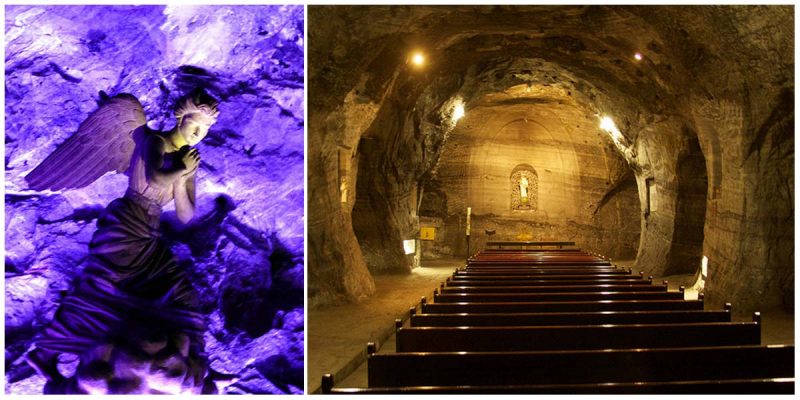The Salt Cathedral of Zipaquirá, an underground Roman Catholic church, was built within the tunnels of a salt mine 300 meters under a halite mountain near the town of Zipaguirá in Colombia.
It is a very popular tourist destination and place of pilgrimage in the country. It is one of the most famous Catholic sanctuaries in the nation, commemorating Jesus Christ’s Stations of the Cross during the Crucifixion.
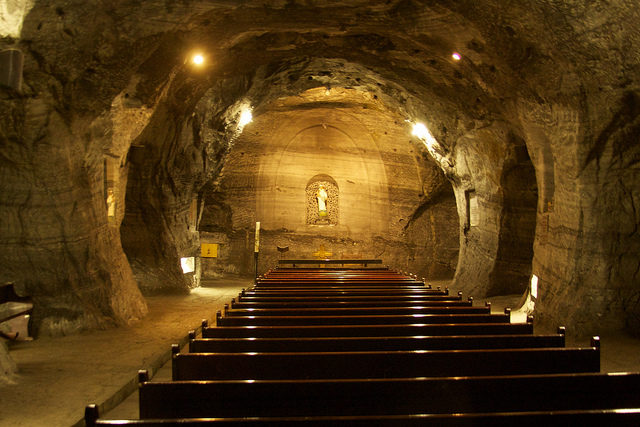
There is a temple at the bottom that has three sections, representing the birth, life, and death of Jesus. The icons, ornaments, and architectural details are hard carved in the halite rock, and some marble sculptures are also included.
The cathedral is considered as one of the most notable achievements of Colombian architecture, being described as a “Jewel of Modern Architecture.” It is a valuable symbol of cultural, environmental, and religious patrimony for the Colombian people.
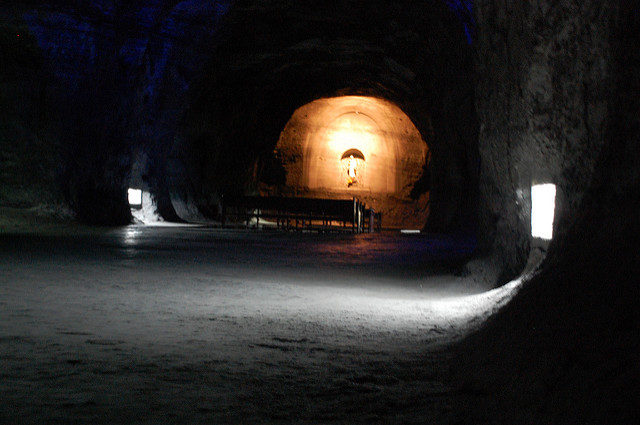
The salt deposits in Zipaquirá had formed around 250 million years ago and were raised above sea level during the late Tertiary period when the Andes mountains were formed. Around 1932, the miners working in the salt mines had carved a sanctuary as a place for their daily prayers, asking for protection to the saints before starting to work.
The construction of a bigger project started in 1950; the Salt Cathedral was inaugurated on 15 August 1954 and dedicated to Our Lady of Rosary, the patron saint of miners.
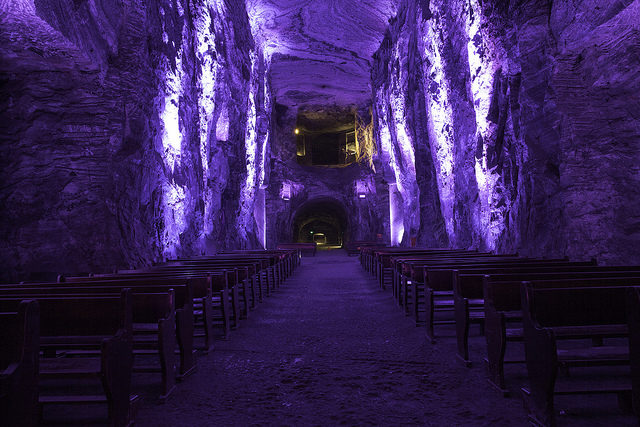
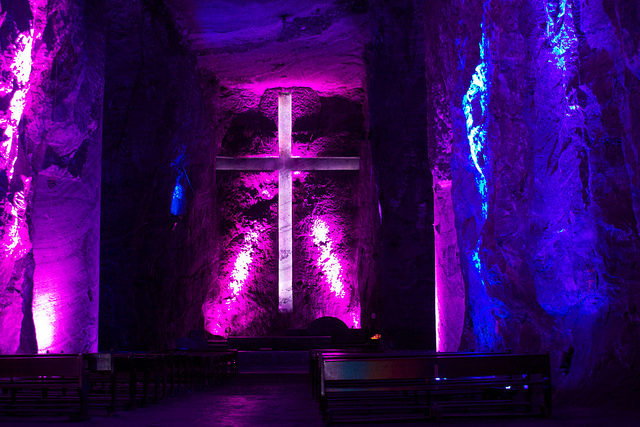
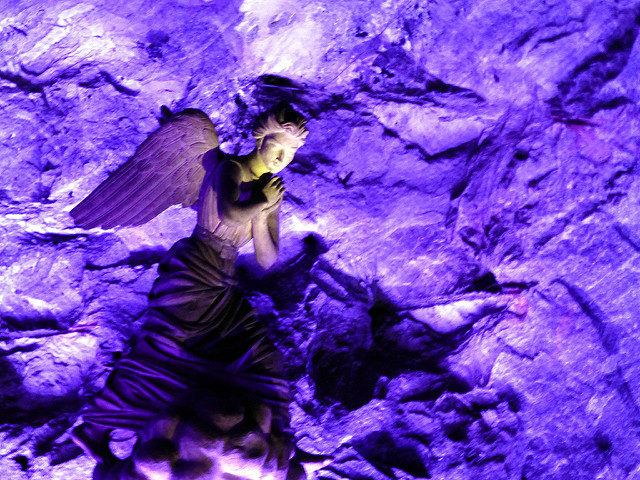
The church was closed in September 1990 because it was carved inside an active mine and there were structural problems and safety concerns. This construction cost of the original church was over 285 million U. S. dollars. In 1991, 200 feet under the old Cathedral, the construction of a new Cathedral was undertaken.
Small but significant additions were made, and the lighting in the interior and scale of its proportions are completely overwhelming. The building is 120m in length and 22m in height. It has six main columns and a maximum capacity of 8,000 people.
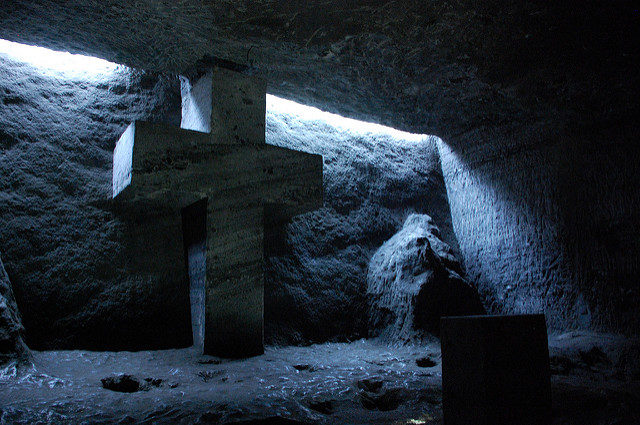
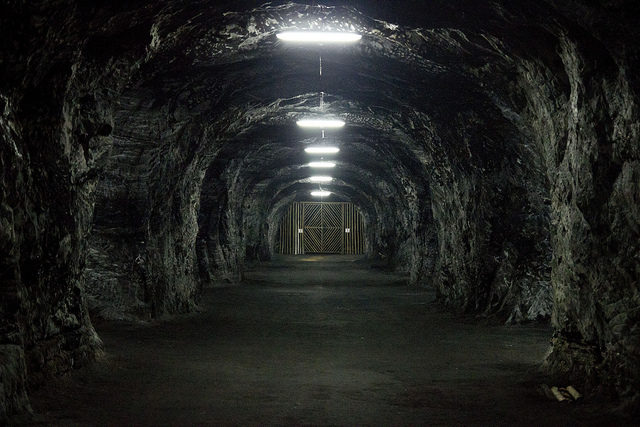
The church has three naves: the main nave, the left nave, and the right nave. The main nave included the monumental cross, the left nave included icons of the birth of Jesus and the baptism of Jesus, and the right nave included the Stations of the Cross icons and the Rosary chapel.
The Colombian Society of Architects opened a contest for the design of the new cathedral. The winner was Roswell Garavito Pearl, who included structural changes in the access tunnel and the dome.
